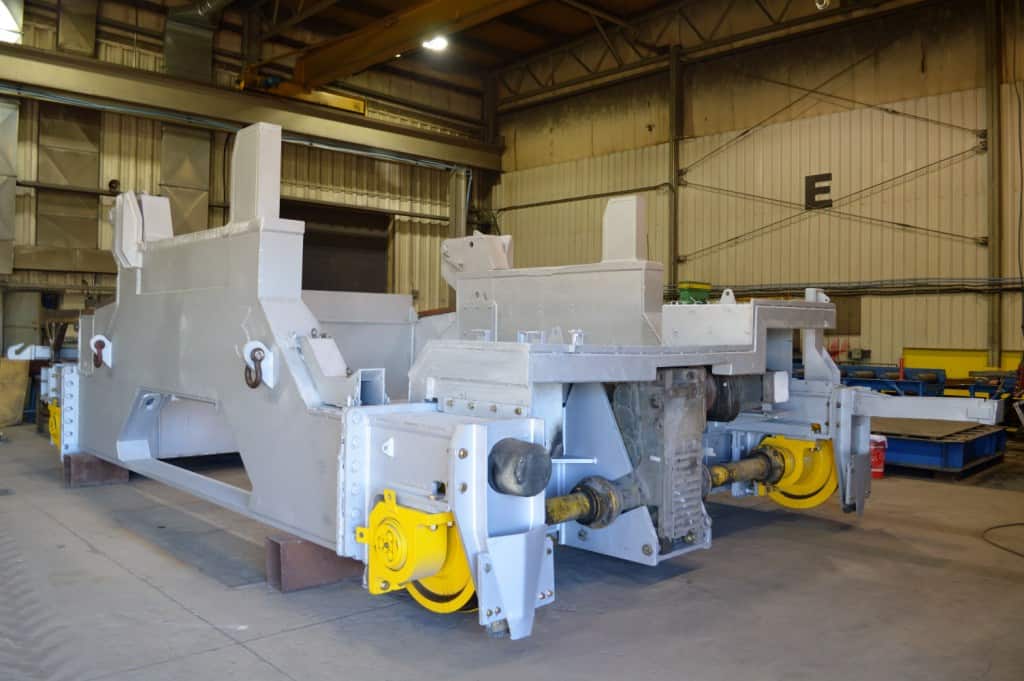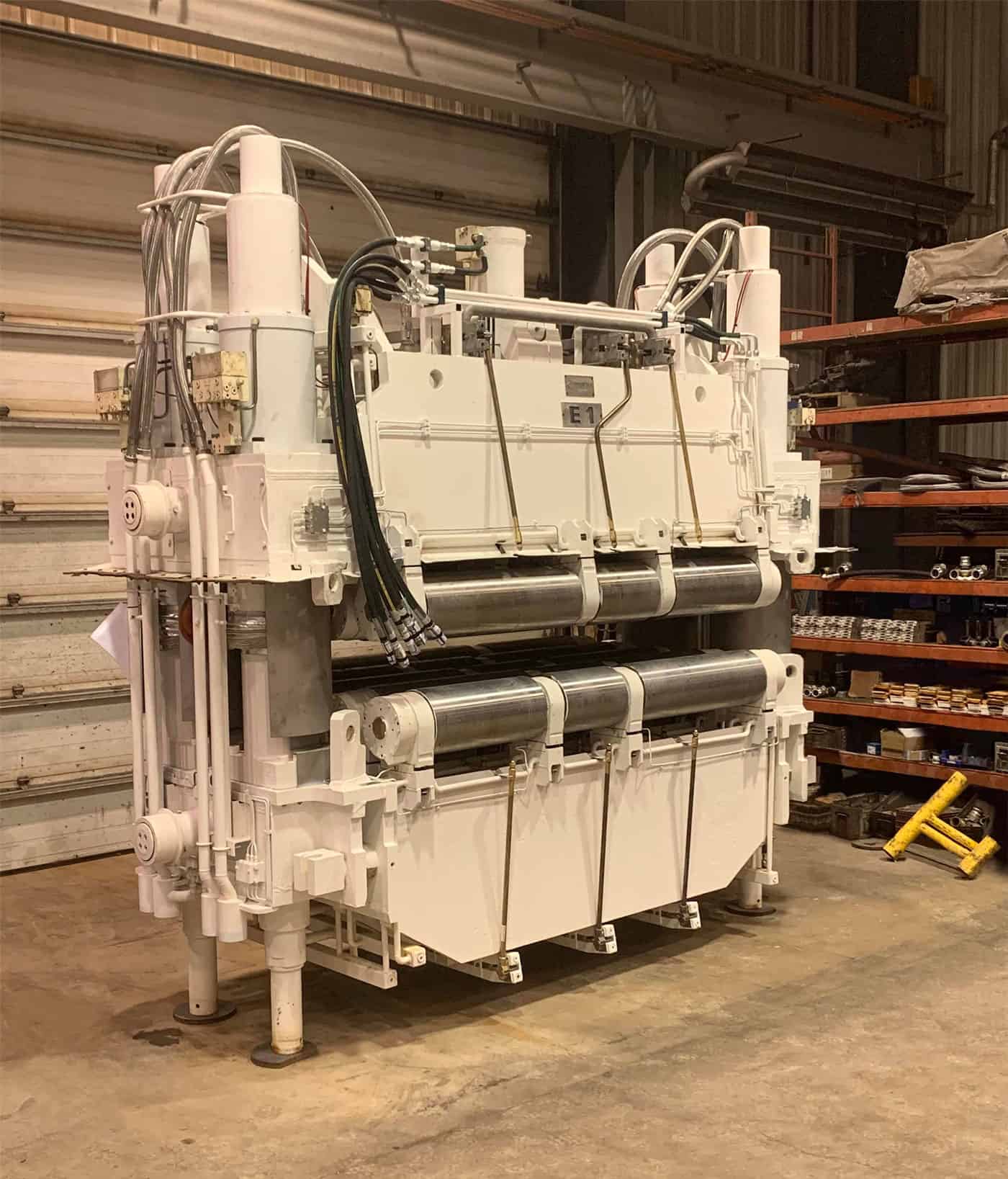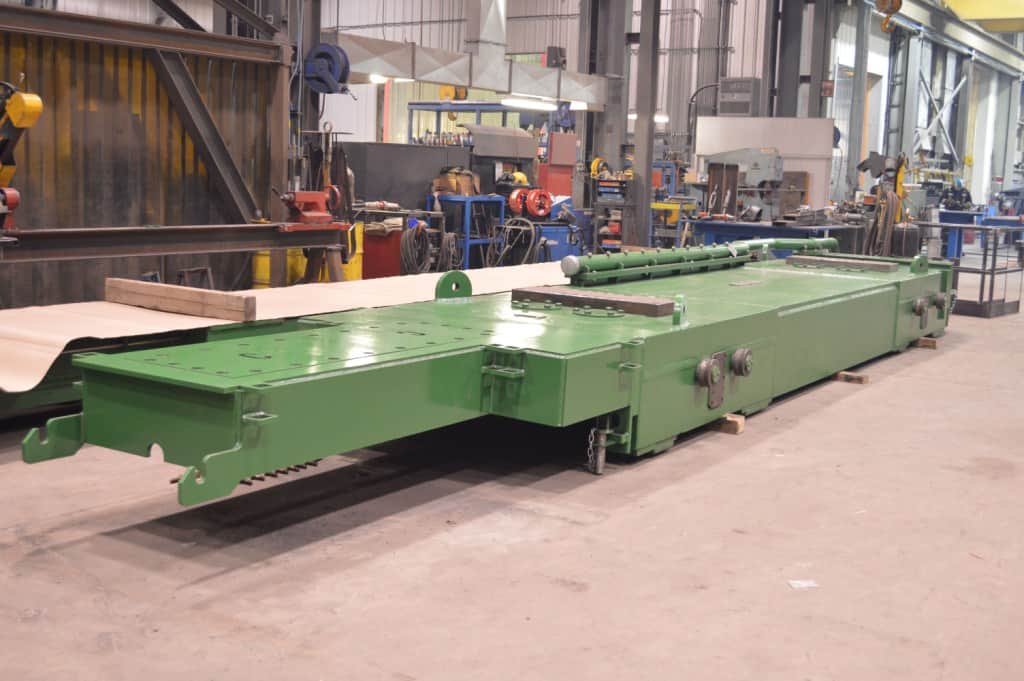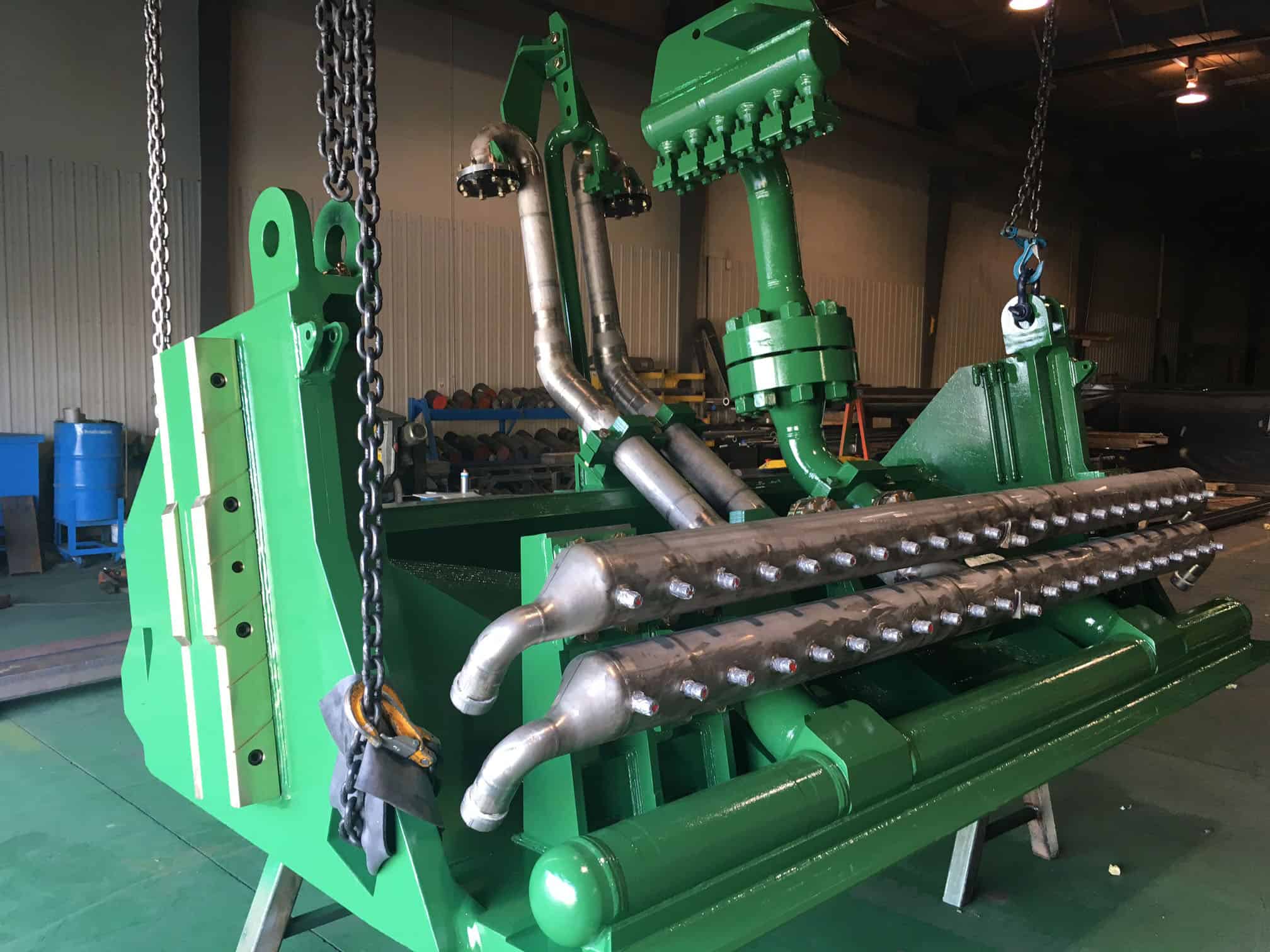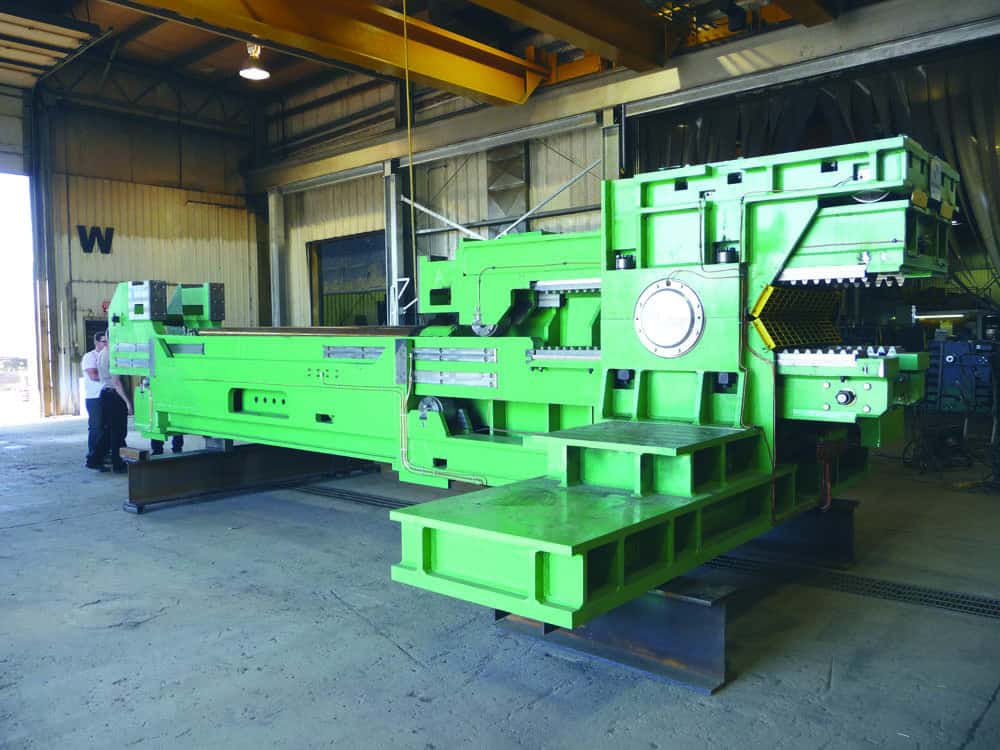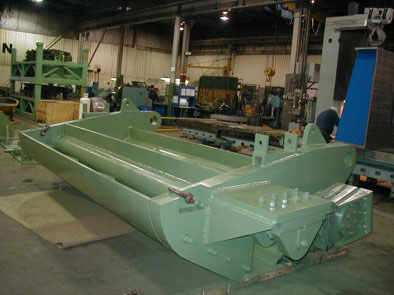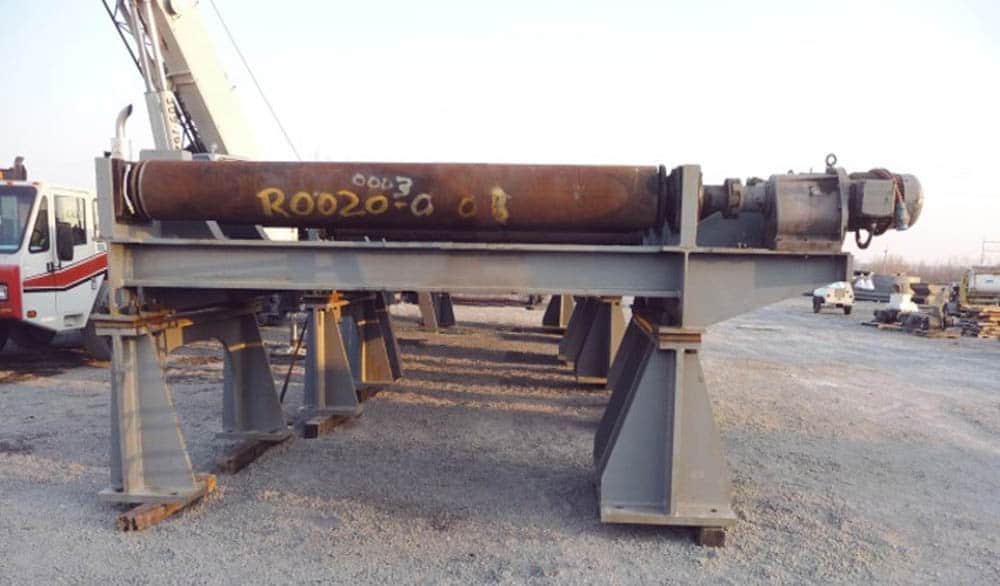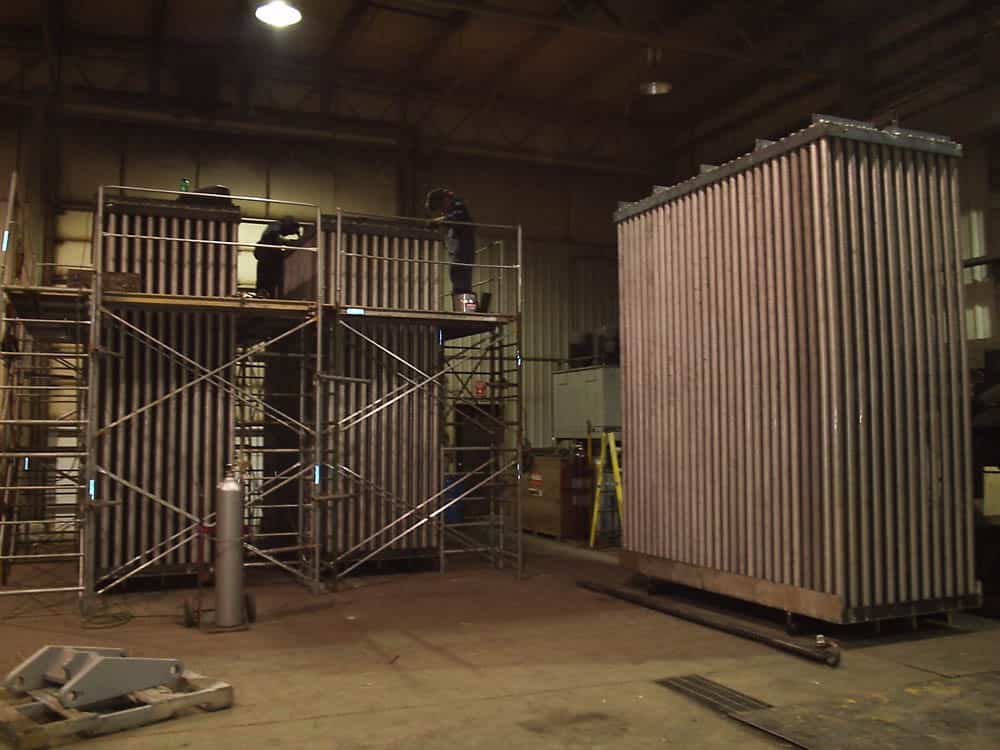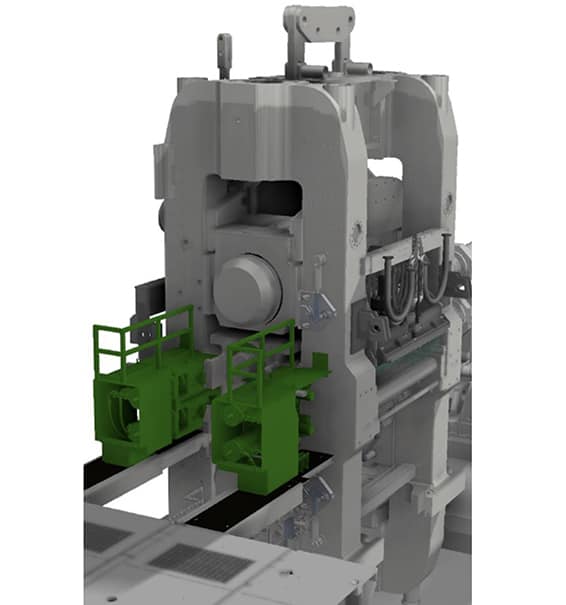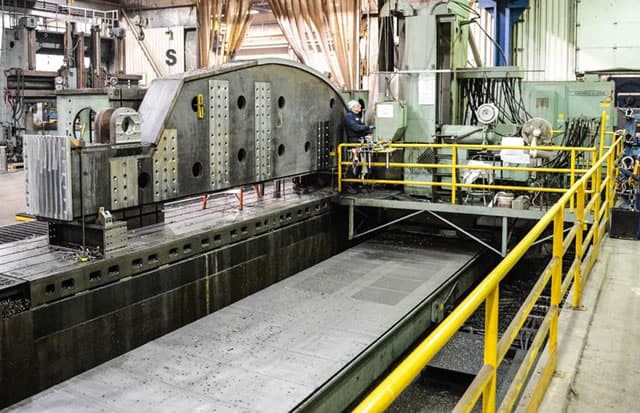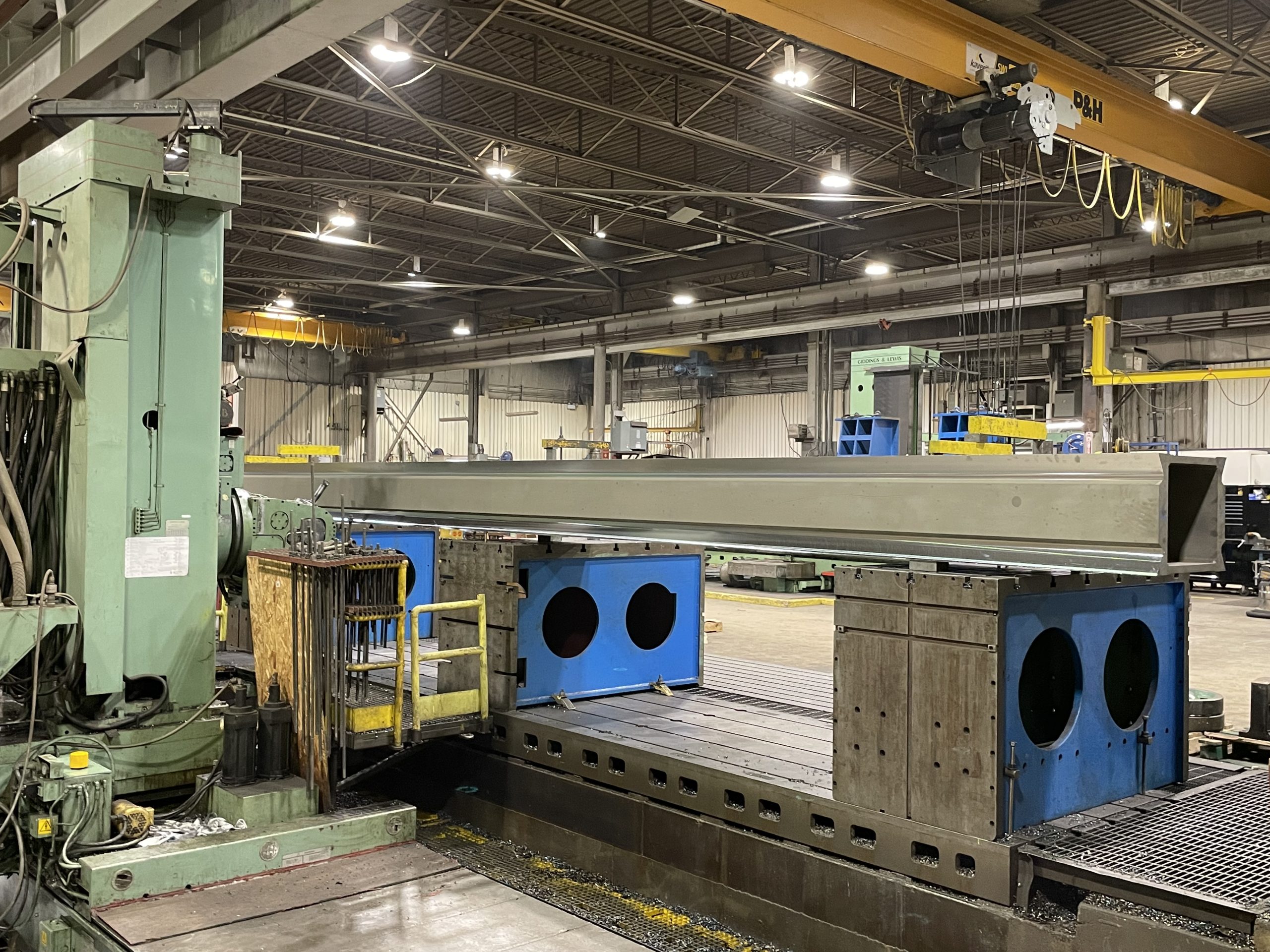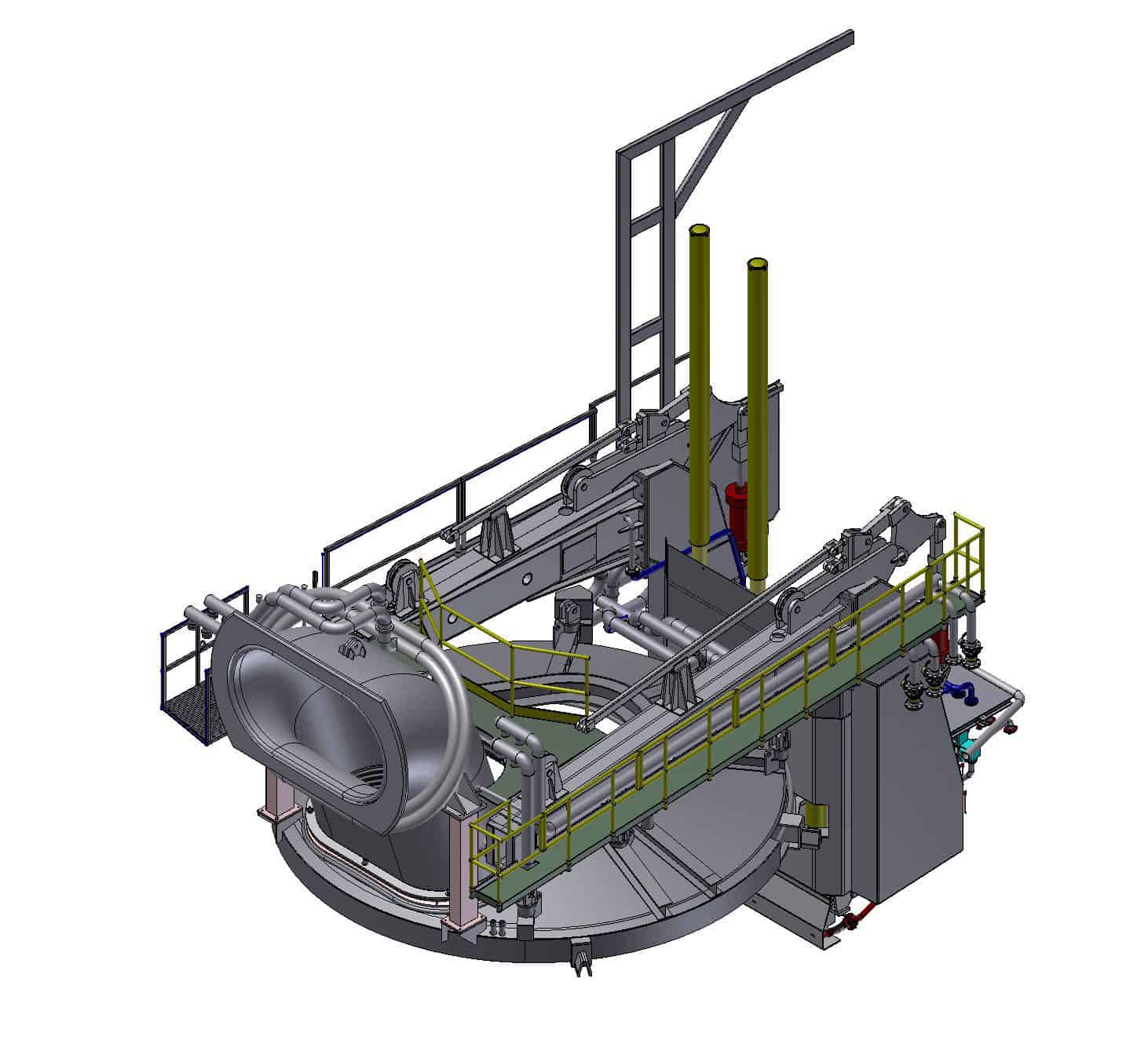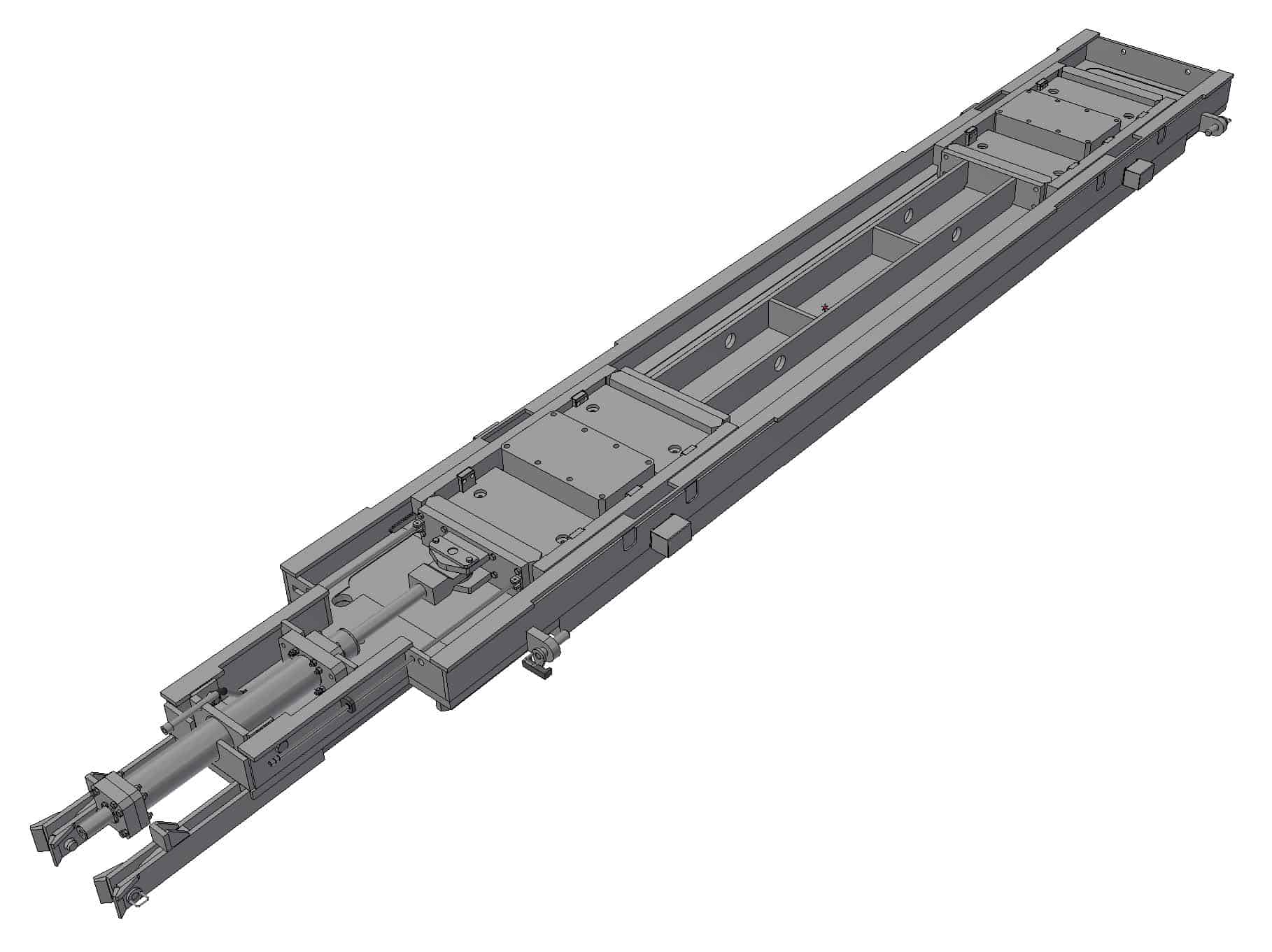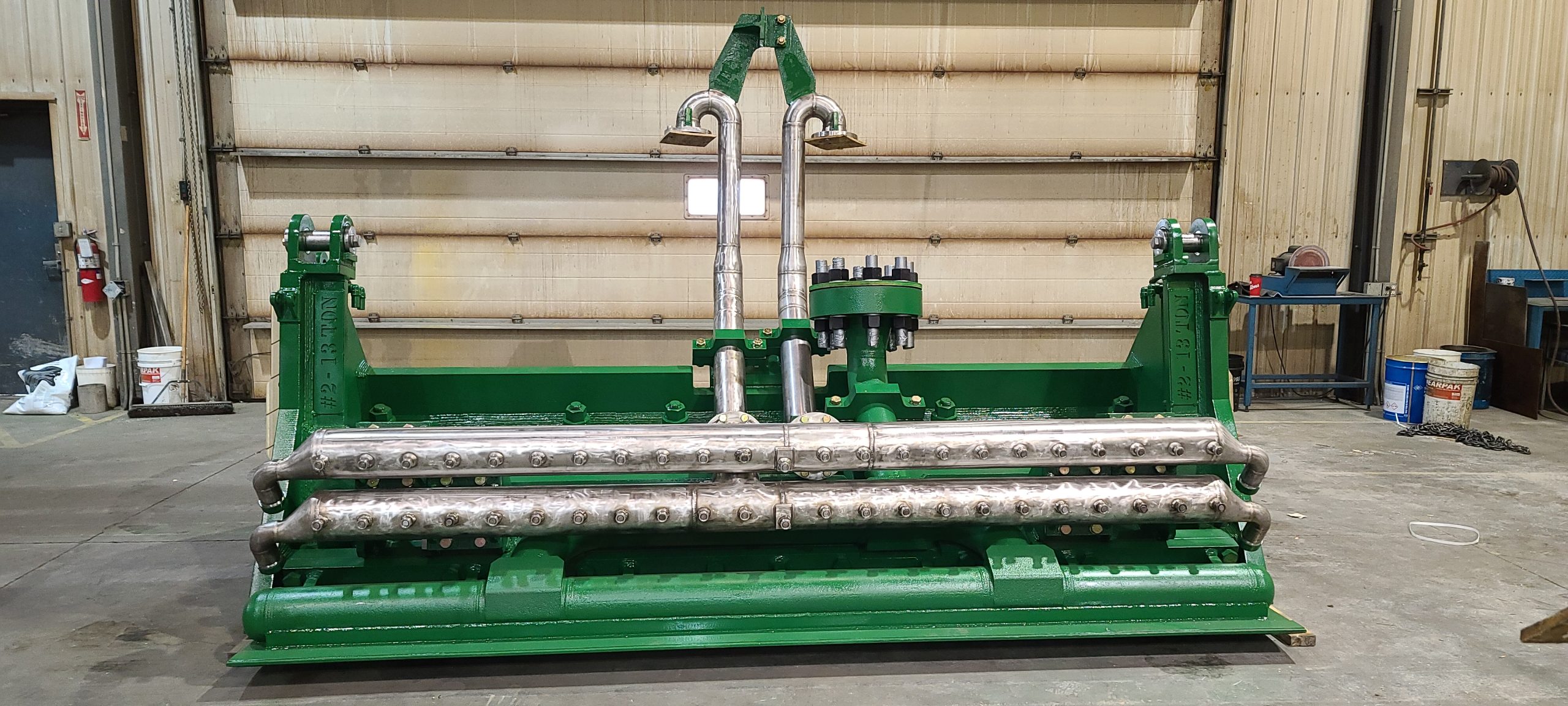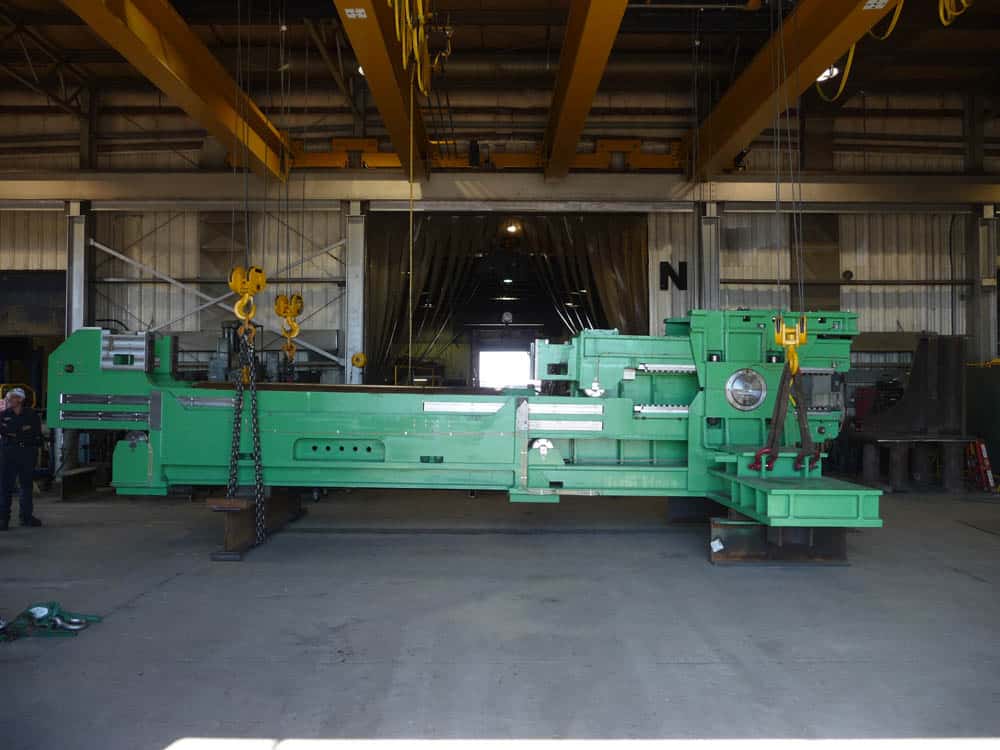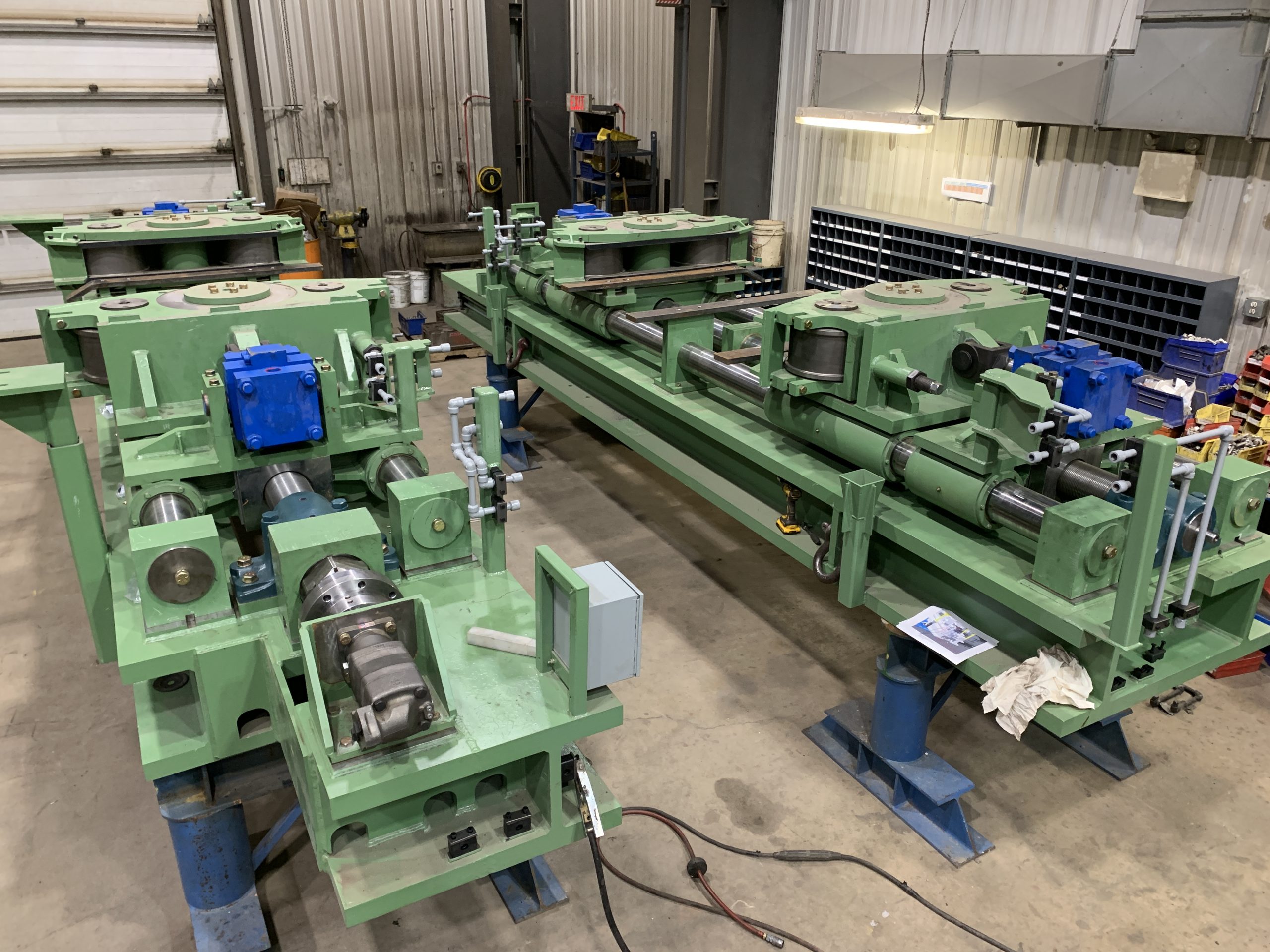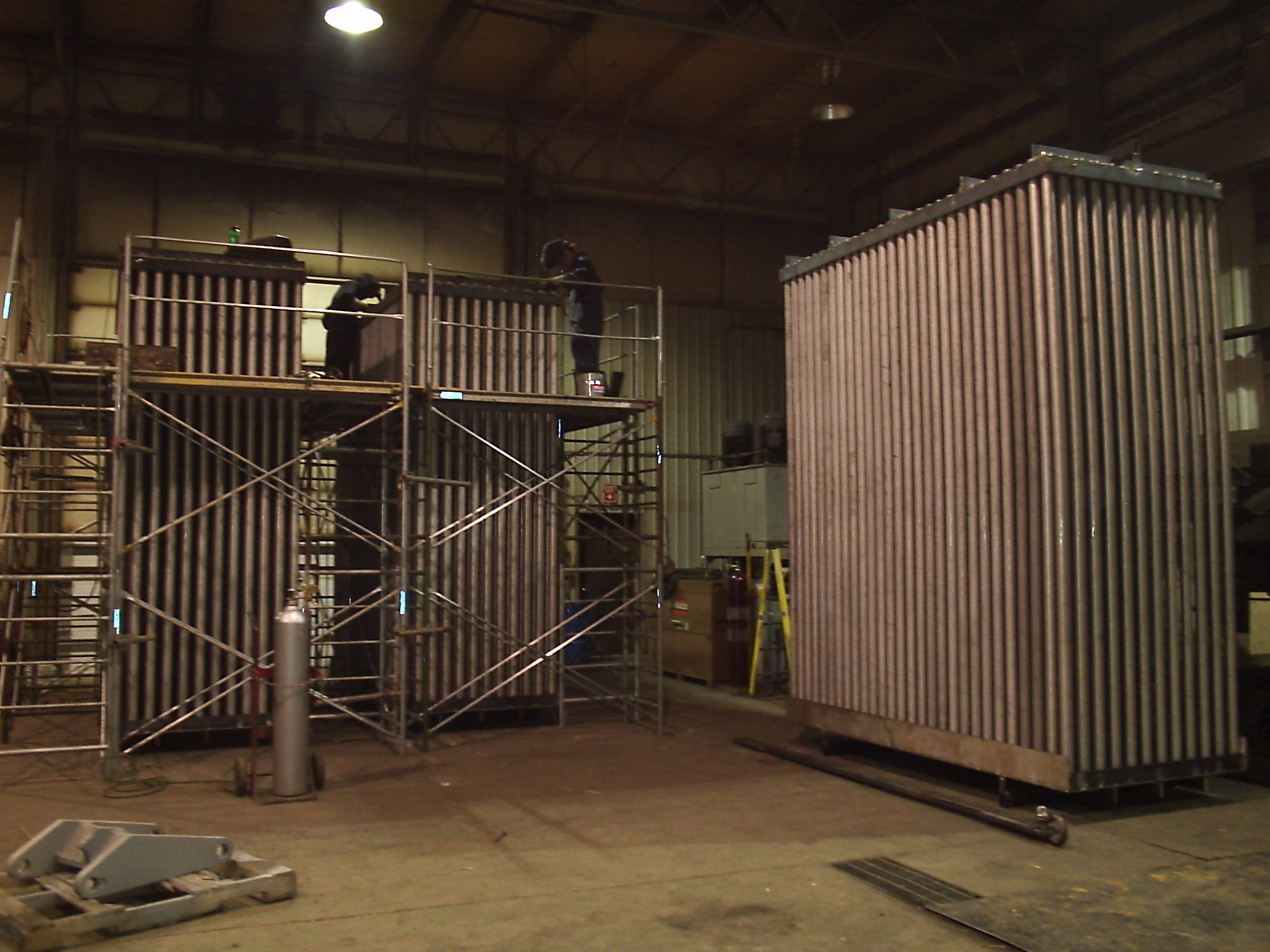 Contact Us
Contact Us
Steel Mills
DynaIndustrial has been providing custom solutions and advancing technology in steel mills since its inception. Thanks to our experienced design team we are able to solve the steel industry’s most challenging problems.
We have re-engineered steel mill equipment to improve reliability and create efficiencies. We are committed to working with our clients to reduce turnaround and maintenance downtime.
Our computer simulated prototypes and project planning ensures smooth implementation when working with critical path schedules.
Project Samples
DynaIndustrial designed, fabricated and machined all parts and components for the EAF furnace platform. By utilizing finite element analysis (FEA), structural failures were eliminated and a rugged and reliable platform was delivered to the customer. With a boring mill capacity of 33’ feet of travel and 6 axis head, machining 37,000 lbs of plate is no problem for DynaIndustrial.
DynaIndustrial was awarded a contract to supply a new pinch roll stand for a Steckel Mill operator.
DynaIndustrial has decades of experience with rolling equipment and has worked with a number of Steckel Mill operators in North America.
Steckel Mills typically process high strength or exotic steels. The pinch roll stand on either side of the Steckel Mill is a critical component in the rolling process. A weak, loose or misaligned pinch roll can result in efective end product plus can also be the source of unwanted downtime.
DynaIndustrial’s goal on the project was to solve the OEM design weak points. First and foremost, the new stand is extremely rugged. A very large equalizer mechanism was installed to ensure that the pinch roll remains level throughout the rolling process and in particular during up down positioning of the roll. To minimize roll looseness, the pinch roll stand’s four posts were made very large.
Replaceable compound steel liners are installed on the posts as well as the pinch roll bearing blocks. The rolls are extracted out the non-driven end by a portable extraction mechanism. The pinch roll housing resembles a typical roll mill housing.
This particular pinch roll stand was made more complicated by the fact that it included a top and bottom descale system. The descale components were designed to prevent water wash out of the aprons, structure, and rolls while maintaining proper off-sets for efficiency.
Throughout the design process DynaIndustrial worked closely with the customer to ensure that the pinch roll stand is easily serviceable, extremely rugged, and very precise.
Technical Specifications—Rolling Mill:
- Single stand Steckel
- 6,000 tons separating force
- Slab Size 6” x 120” x 65’
- 0.135” to 3.000” coil / plate thickness range
DynaIndustrial has the capabilities to manufacture or rebuild mast stems to customer specifications. In this case, failure analysis was performed to assist with design improvements that eliminated weld failures and increased cooling to the stem and stool.
Prior to fabricating the transfer cars, DynaIndustrial’s engineering team redesigned them to include improvements to allow easier access for maintenance. Looking to increase productivity, argon stir systems can also be installed directly to the ladle and transfer cars.
Complete rebuild service of caster segments including hard surfacing of rolls, remanufacture of components and assembly. Using an existing OEM design, design improvements were made to increase service life, resulting in decreased maintenance cost. Resurfacing of the rolls are done in house with multiple sub arc machines and machining capabilities.
Productivity increased from start to finish.
DynaIndustrial is a single source supplier for rebuilding all furnace gantry components including gantry pins, mast stems, roller guides, mast stem guides and copper contact pads.
With our large boring mill capacity and decades of experience, repairs of step filler units are a great fit for DynaIndustrial!
A typical four hi mill stand consists of a mechanical screw, AGC capsule, a roll stack consisting of two backup and two work rolls. In the stack, a method must exist to compensate for backup or work roll wear as the rolls transition from new to scrap size. Sometimes this is accomplished by “shimming” at the bottom of the mill to a predetermined height based on various backup and work roll combinations.
Maintenance of the shims is critical to the overall performance of the assembled mill stand. A poor or inconsistence stack will result in inconsistent mill stretch and possible downgraded product.
The shimming methods differ from one mill to next. In some cases, the method is manual, in others a mechanism is integrated into the mill stand, in still others the shims are integrated into a module. Modular units are sometimes referred to as a step filler unit.
DynaIndustrial has significant experience in the design and repair of step filler units.
Over the past 20 years DynaIndustrial has made numerous modifications to step fillers based on onsite experience and teardown observations. Design changes include:
- Improved reliability
- Reduced water ingression
- Reduced removal and installation time
- Reduced rebuild costs by increasing component reuse
All units are numbered in order to develop a long-term history. Teardown inspection reports and final reports are generated for each unit.
Hot rolling of steel is a dynamic process requiring the precise positioning of backup and work rolls. A well-maintained roll chock is a critical subcomponent of the roll stack. DynaIndustrial rebuilds chocks in the process returning them to OEM drawing specifications. We have also supported customers with chock redesign and liner upgrades.
DynaIndustrial redesigned the top guide for a large plate mill. Numerous changes were made on the top guide to improve the original OEM design.
The most significant change was the addition of a mechanism to contain water being sprayed up from the bottom descale header. In addition changes were made to;
- Rolling Cooling Header design including header mounts
- Descale Header design including infeed piping
The top guide was supplied assembled; complete with roll cooling and descale nozzles for direct installation into the mill! Units were supplied for the mill entry, mill exit and a spare unit.
On a 4 hi rolling mill stand, the roll stack has two backup rolls and two work rolls.
On either side of the top work roll is device referred to as a work roll top guide or upper guide or top stripper. The top guide’s main function but far from its only purpose is to ensure that the steel is fed into the mill work roll bite consistently and that the steel also exits the top roll consistently and does not follow the curvature of the work roll.
Depending on the type of mill stand, the top guide can have a multitude of other purposes including:
- Roll cooling header location and attachment point
- Top descale header location and attachment point
- Sealing system to keep cooling water off the hot steel
- Guard to protect equipment in the event of a cobble
Each of the above items increases the importance and the criticality of a properly functioning top guide.
DynaIndustrial is in the business of building OEM replacement parts. With a large talented engineering group, it would be easy to assume that DynaIndustrial only supplies engineering services and internally engineered equipment. The fact of the matter is engineered products are only one area of our business.
Between the two DynaIndustrial facilities we have an expertly trained and experienced group of people dedicated to light and heavy fabrication. Our machining capability complements the fabrication with both CNC machining and multiple large boring mill capacity. In order to accommodate large orders and equipment repair we can lift 60 tons by overhead crane.
The pinch roll frame pictured below was supplied to a customer in the USA as an OEM replacement part. DynaIndustrial manufactured the pivot frame assembly and also supplied an engineered support frame to allow the unit to be easily extracted and inserted into the much larger assembly.
Over the years, DynaIndustrial has developed expertise in the repair and manufacture of steel mill mandrels. In our modern and spacious facility we are capable of handling the smallest repair to the complete design and manufacture of replacement mandrels, all in a cost efficient and timely manner.
Capacity and Capability:
- Approximately 45,000 square feet of operating space
- 60 ton overhead crane capacity
- Lathe capacity 41” swing with 314” between center
- Mill capacity 30” x 80” x 384” with 5-axis machining capability
- Team of millwrights provide disassembly, inspection and reassembly
Quality:
- ISO 9001:2015 Registered
- CWB Certified to W47.1 Div 2
- All mandrels are tested in-house to ensure they meet client specifications
Custom Solutions:
- In-house engineers provide custom designed solutions
- Ability to repair and retrofit components for economical benefit
- Ability to manufacture components as per original drawing specifications
Utilizing the expertise of our team we worked in collaboration with the customer to resolve their existing reheat charge and extraction equipment design flaws.
We redesigned the slab squaring system to prevent the foundation and equipment from damage.
We also created access points for ease of roll maintenance.
One of our customers was experiencing repeated and consistent failures of the reheat structural frame and walking beams. They had welding crews repairing cracks weekly. DynaIndustrial performed detailed finite element analysis (FEA) of the structure and designed upgrades that were relatively easy to install, eliminated the weak points and created a reliable structure. Five years later, the customer has only performed occasional inspections; no further repair work has been required.
Recuperators are a heat exchanger used in the steel industry to transfer energy between two air streams. A steel mill’s reheat furnace recuperator recovers heat energy from the furnace flue gas duct and preheats the combustion air being supplied to the furnace burners.
Units dramatically increase the energy efficiency of the reheating process; therefore maintenance of the units is critical.
DynaIndustrial has supplied a variety of units to steel mills in Canada and the USA ranging in size from 7’x 7’ x 14’ high to 5’x 12’ x 14’ high. In all cases multiple units were supplied; in groups of three or four. Hot side tubes are pre bent to control thermal growth direction.
Units can be supplied in mild and stainless steel and tube materials can vary based on application. DynaIndustrial’s engineering department can create 3d models and manufacturing drawings.
Quality products, delivered on time….. that’s the DynaIndustrial difference! DynaIndustrial was awarded a contract to supply a work roll shifting device to a large plate mill. The device was a portion of a much larger project at this facility to install a Continuous Variable Crown (CVC) system on the single stand plate mill.
The project timeline was extremely tight! The design and manufacture of the entry and exit units was to be completed in 12 weeks in order for the units to be installed during an upcoming scheduled outage.
Each CVC shifting frame was machined from a single forging. The high-pressure work roll latching and shifting cylinders were made in-house. All hydraulic cylinder connections were manifolded to allow logical connection of large hoses to the piping and ultimately to the hydraulic servo valve system.
Covers were designed to double as equipment access platforms to allow operators access to specific areas in the mill. The assembled unit were delivered on time and installed directly on the mill during the scheduled outage.
How can we help?
With decades of experience, an in-house team of engineers and state of the art manufacturing, DynaIndustrial will design and manufacture a solution to solve your most challenging problems.
Contact us today by emailing sales@dynaindustrial.com or calling
306.359.7088 (Regina, SK) or 306.933.4303 (Saskatoon, SK) .




